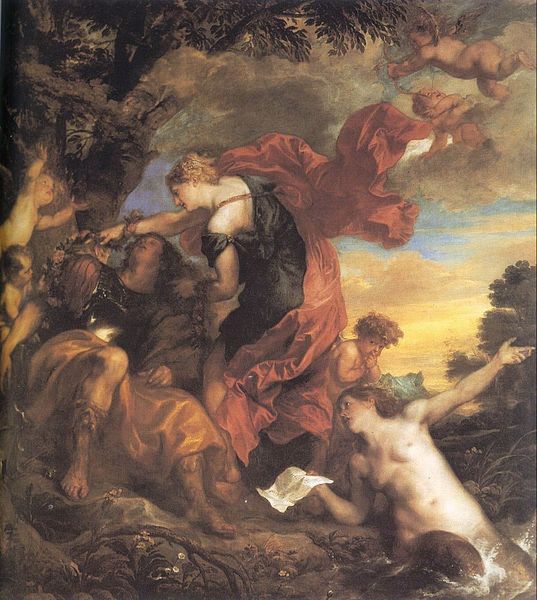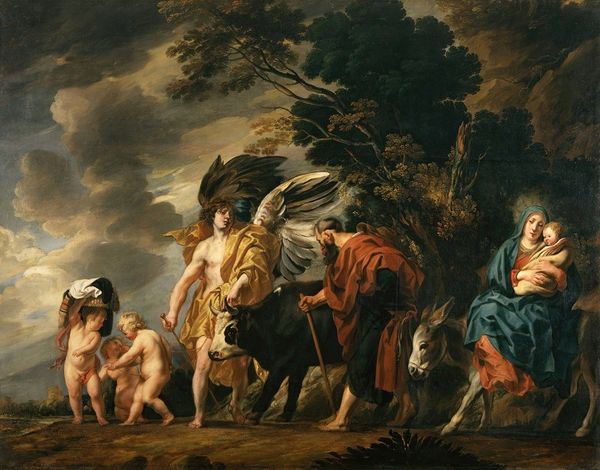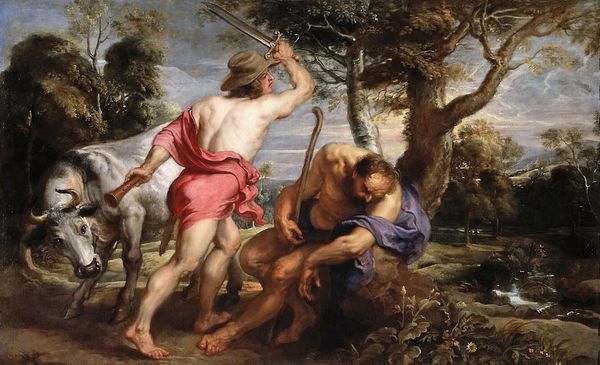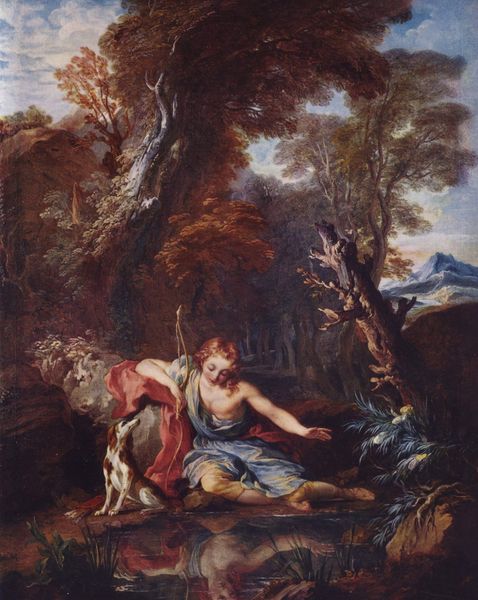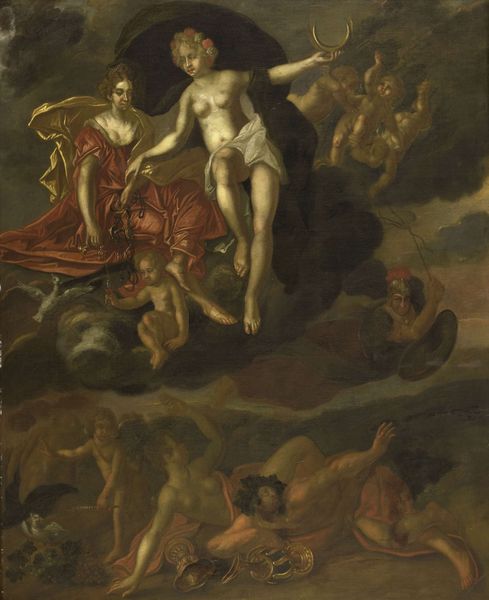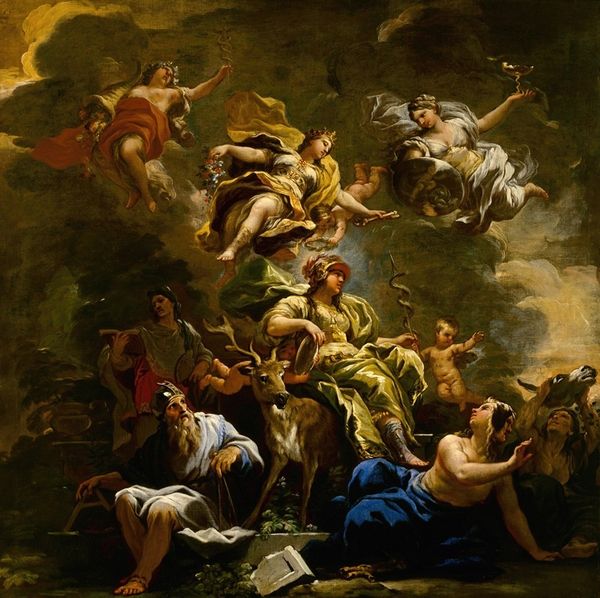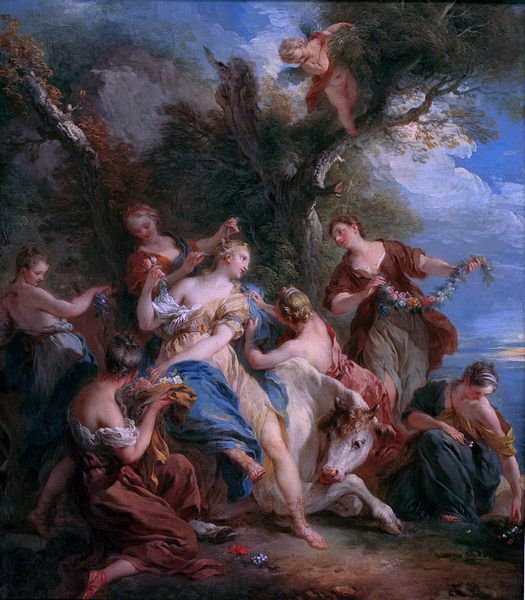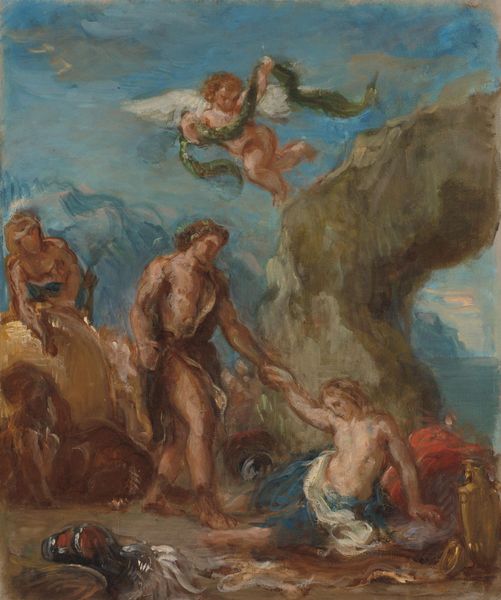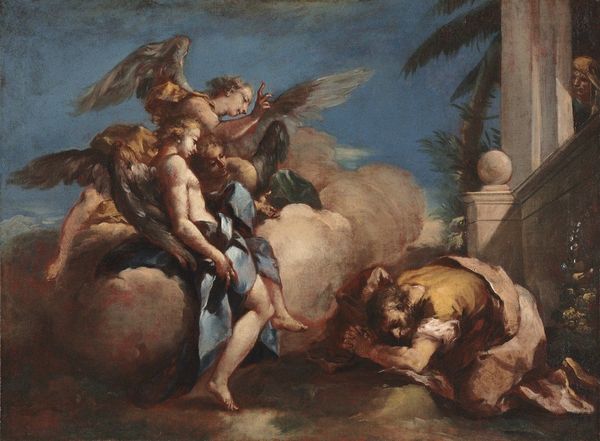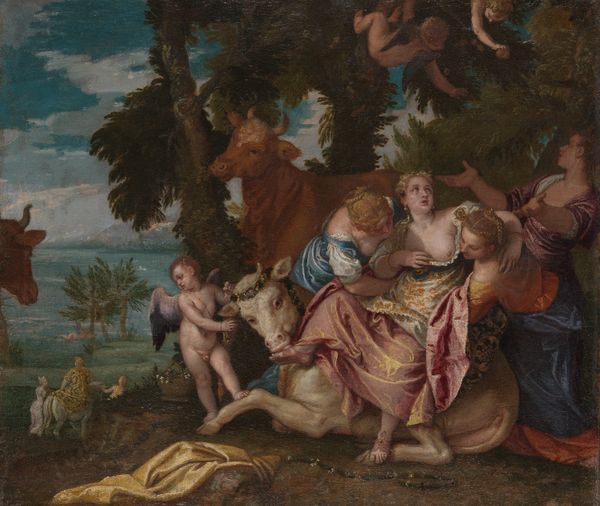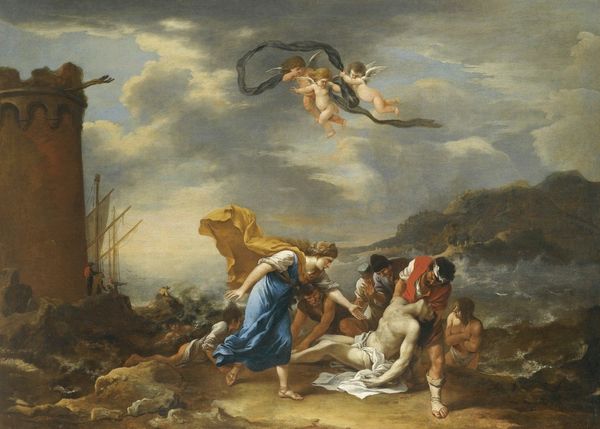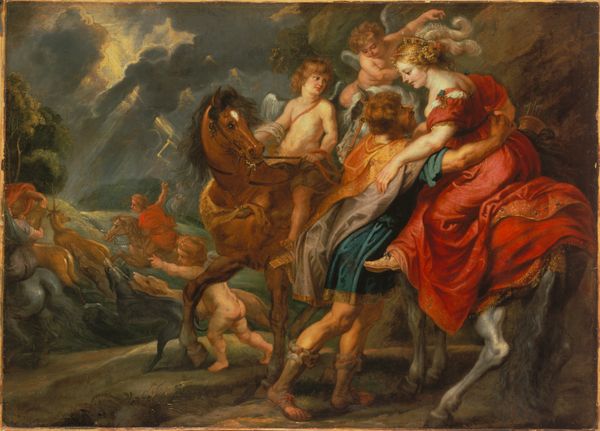
oil-paint
#
baroque
#
oil-paint
#
figuration
#
oil painting
#
mythology
#
painting painterly
#
history-painting
#
nude
Copyright: Public Domain: Artvee
Editor: This is Anthony van Dyck's *Rinaldo and Armida*, painted around 1629, using oil. I find the scene both chaotic and captivating; figures in various states of undress caught in a swirl of action. How would you interpret the symbols in this work? Curator: The symbolism here is rich, drawing heavily on the epic poem "Jerusalem Delivered." Note Armida's powerful gesture, attempting to bind Rinaldo with flowers - a visual representation of seduction and the entrapment of a warrior by love. But look at the Cupids, and you will notice one of them aims an arrow at Rinaldo, reinforcing the concept that love's wound is like war’s. Do you notice any cultural connections here? Editor: Well, there's definitely a contrast between Rinaldo’s armour and Armida’s exposed state, which perhaps speaks to the clash between duty and desire. Also there's another Cupid reaching up from the ground to place a helmet on Rinaldo’s head. Curator: Exactly. The discarded armour beside them underscores the abandonment of martial virtues for earthly pleasure. Even the landscape echoes this theme, shifting from a wild forest to a softer background implying ease and beauty, which stands as a direct counterpoint to war. The symbolic language tells a clear story. And how is that story communicated? Editor: The artist uses specific characters to convey this story with love, conflict and pleasure. Van Dyck communicates it through a universal experience, not bound by any one time or place. Curator: Precisely. The narrative is rooted in specific characters and the poem "Jerusalem Delivered," and presented as something eternal, where even viewers centuries later can empathize with this visual allegory of desire and surrender. Editor: Seeing it laid out like this makes this artwork way more complex. Thanks! Curator: My pleasure, now, every time you come across some art, let yourself think, what cultural associations does this evoke?
Comments
No comments
Be the first to comment and join the conversation on the ultimate creative platform.

